Ancient Heart of Phoenix
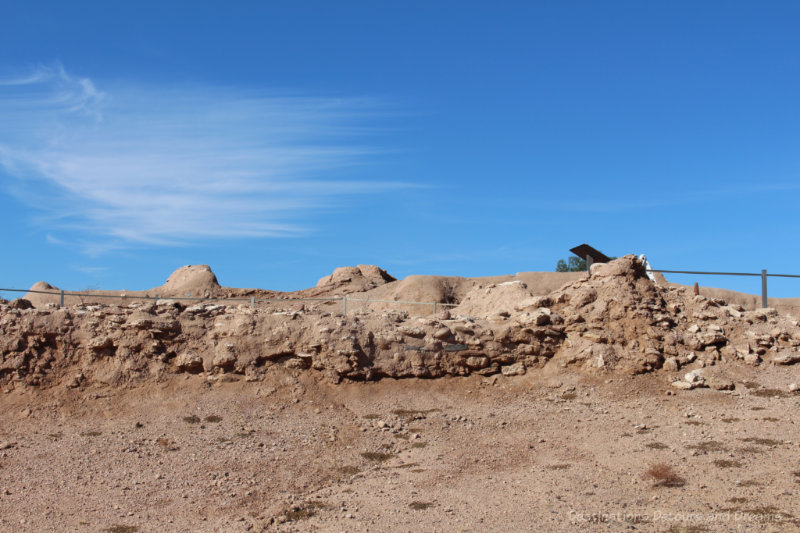
Hohokam history at S’edav Va’aki Museum (formerly Pueblo Grande Museum and Archaeological Park) in Phoenix, Arizona
S’edav Va’aki Museum in Phoenix, Arizona is situated on a 1,500 year-old site left by the Hohokam culture. The site allows you to explore the ancient heart of Phoenix. I explored the site when it was still named the Pueblo Grande Museum and Archaeological Park. It was renamed in 2023.
Pueblo Grande began as a small settlement around AD 450 and grew to over 1500 people. It was one of the largest Hohokam settlements in the area. Today, the Museum provides information about the Hohokam people and their culture. Outside the Museum building, a trail guides visitors through the ruins of an ancient Hohokam settlement.
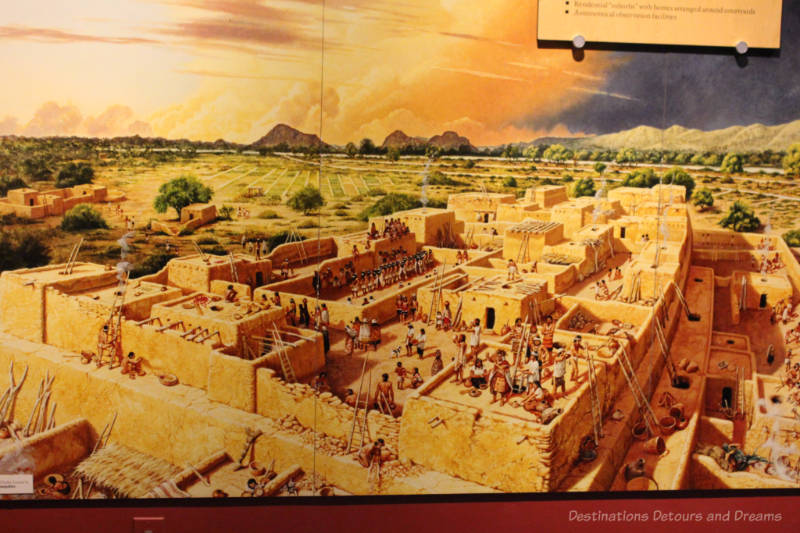
The Hohokam cultivated many plant species, including maize, cotton, squash, amaranth, little barley, and beans. Unlike today, The Salt River ran year round during Hohokam days. But the arid desert environment did not produce enough rainfall to grow crops. The Hohokam built over one thousand miles of canals and engineered the largest and most sophisticated irrigation system in the Americas, no small feat when you consider the primitive tools they had at their disposal.
The Hohokam cultivated many plant species, including maize, cotton, squash, amaranth, little barley, and beans. Unlike today, The Salt River ran year round during Hohokam days. But the arid desert environment did not produce enough rainfall to grow crops. The Hohokam built over one thousand miles of canals and engineered the largest and most sophisticated irrigation system in the Americas, no small feat when you consider the primitive tools they had at their disposal.
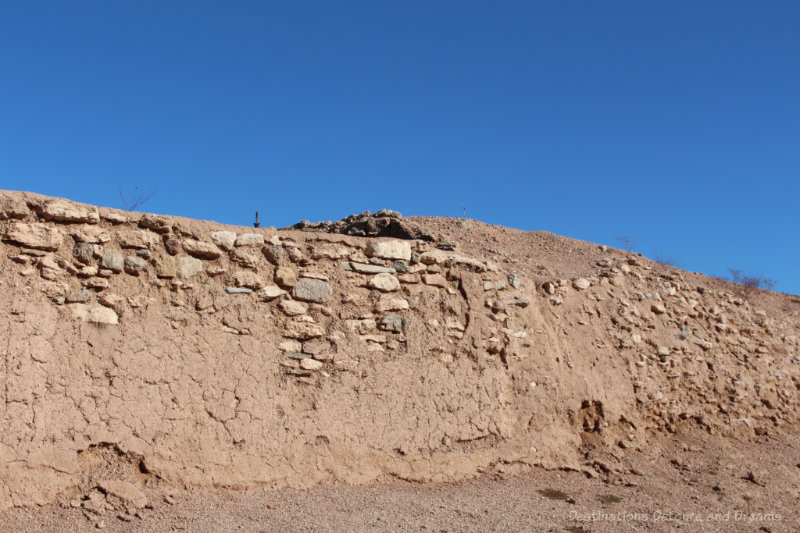
Mound villages, of which there were over 50 in the Salt River Valley, are called that because of the platform mounds at their centre. Mounds were first built with trash or soil and capped with caliche, a lime-rich soil found in the desert which makes a good plaster when mixed with water. The mounds were urban centres with large open plazas where ceremonies might have been performed. Pueblo Grande also included residential “suburbs”, astronomical observation facilities, waste disposal facilities, and ball courts.
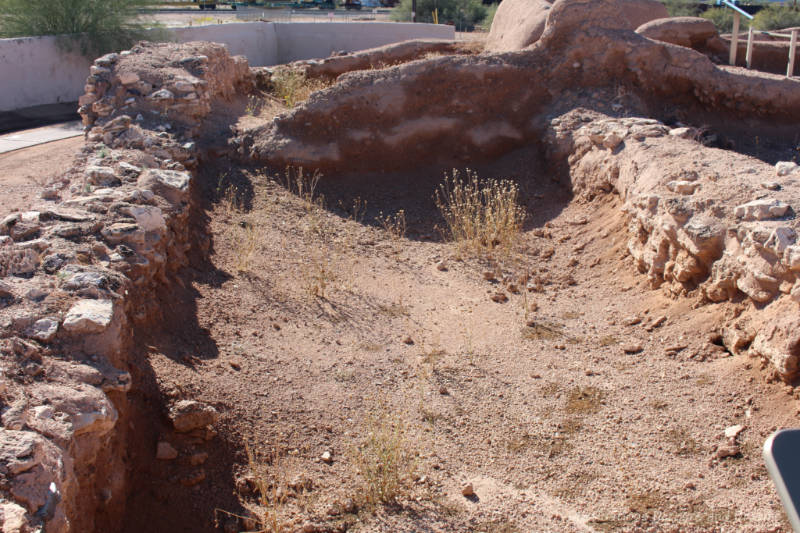
Artifacts found inside excavated rooms, such as carved shell and wood, an axe, red and purple
pigments and an animal effigy, suggest the rooms were used for special purposes. (Side note: I found the ways in which archaeologists determined what the life of the Hohokam was like as fascinating as the information they uncovered.)
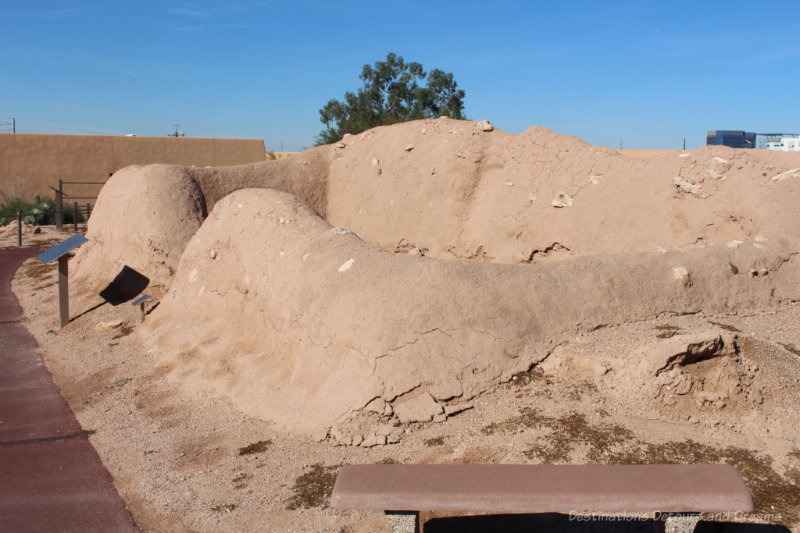
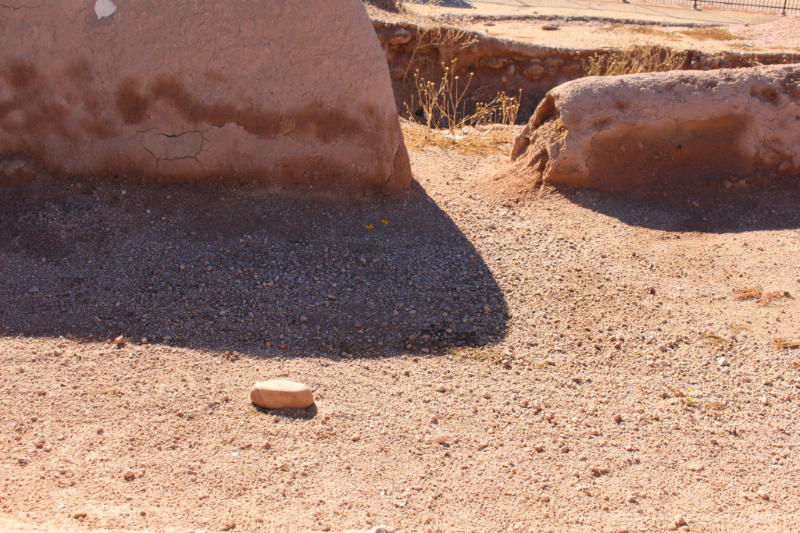
At summer solstice sunrise and winter solstice sunset, the sun’s rays passed through the corner door and onto another door in the middle of the south wall. Some researchers think the room may have been used as a calendar.
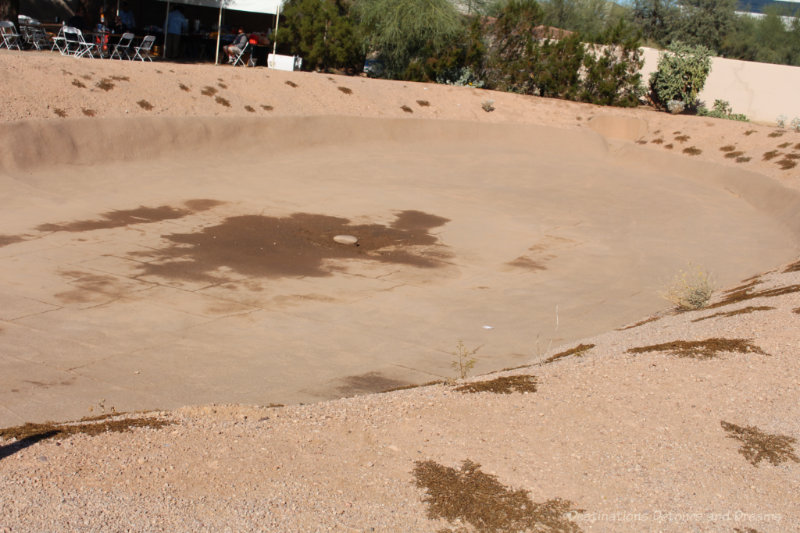
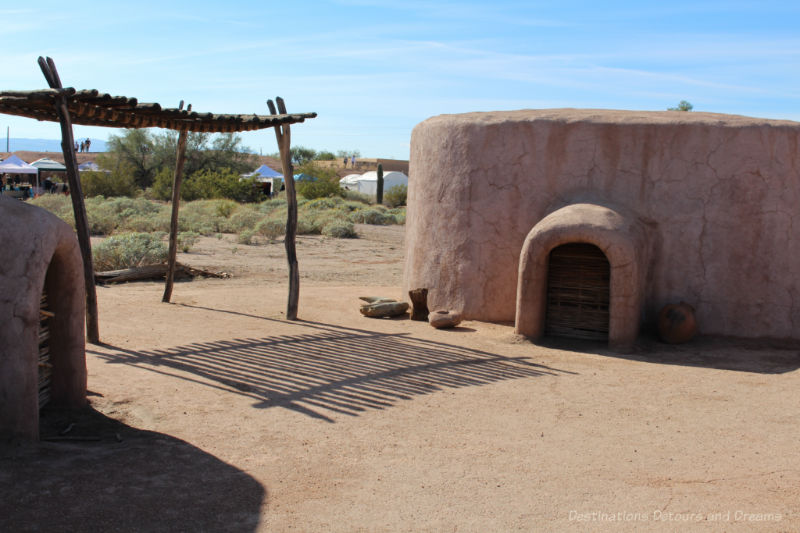
Hohokam houses were built in clusters facing a common courtyard. The first houses were pithouses with floors dug into the ground, a wooden frame, and an earthen outer shell. After AD 1150 the adobe compound became more prevalent. Caliche was mixed with earth and water to make adobe walls. Roofs were made of wood and a caliche plaster covered the floor. Replicas of both style of houses are on display at Pueblo Grande. Because of modern building standards, walls and doorways in the replicas are taller than they would have been in the ancient homes.
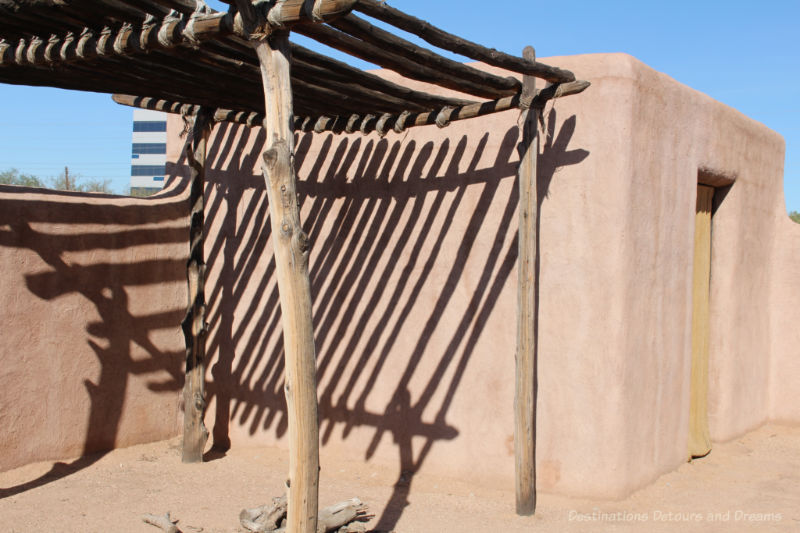
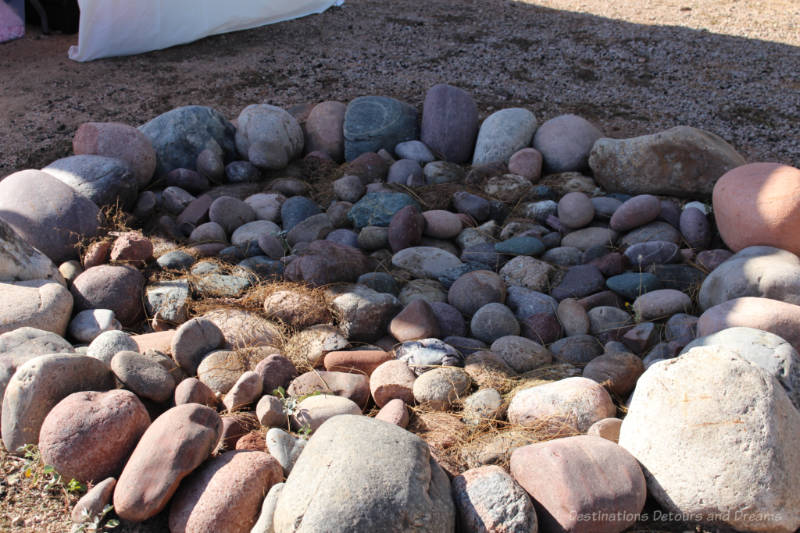
Outdoor pathways take visitors through the ruins where placards contain information about specific rooms and Hohokam life. Inside the museum building, you’ll find a variety of Hohokam artifacts and more information about their life and culture.
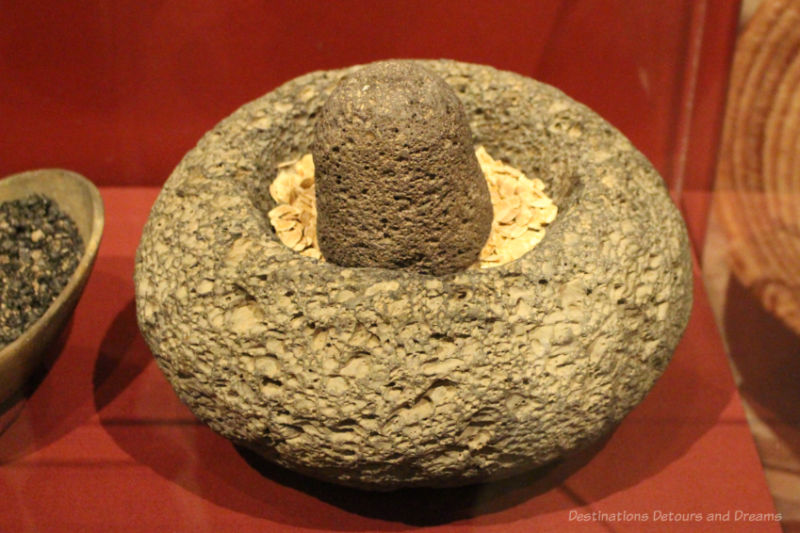
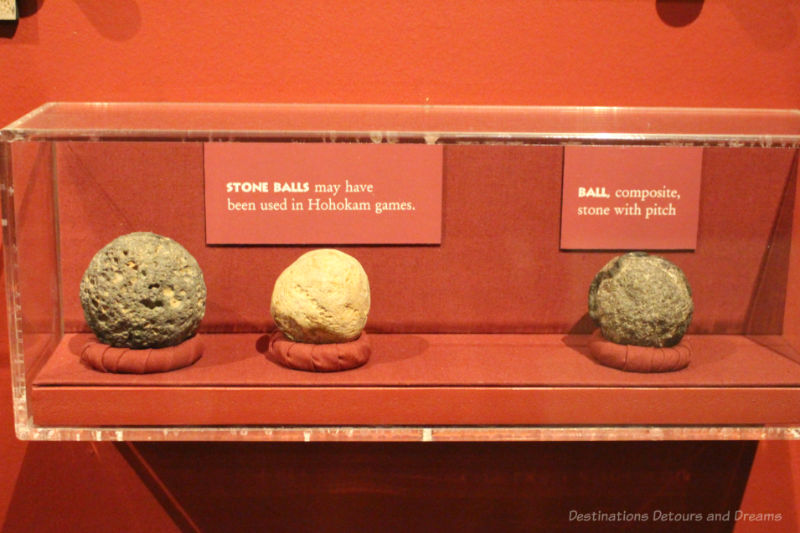
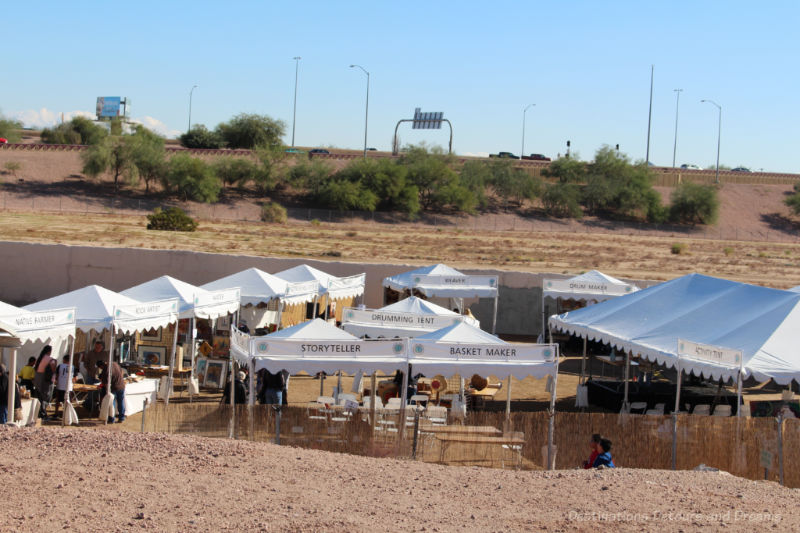
A sign on the outdoor trail explains how you move back in time as you wind your way around the ruins. S’edav Va’aki Museum is not far from downtown Phoenix. The buildings around it, the freeway, and the sounds of planes landing at and taking off from nearby Sky Harbor Airport make an interesting juxtaposition with the ancient feeling of the mound. There was an Indian market in the parking lot on the day I visited Pueblo Grande. The market added another dimension to what felt like a bit of time travel as I compared modern Indian crafts to the ancient artifacts in the museum.
Samples of Hohokam Pottery in the Museum
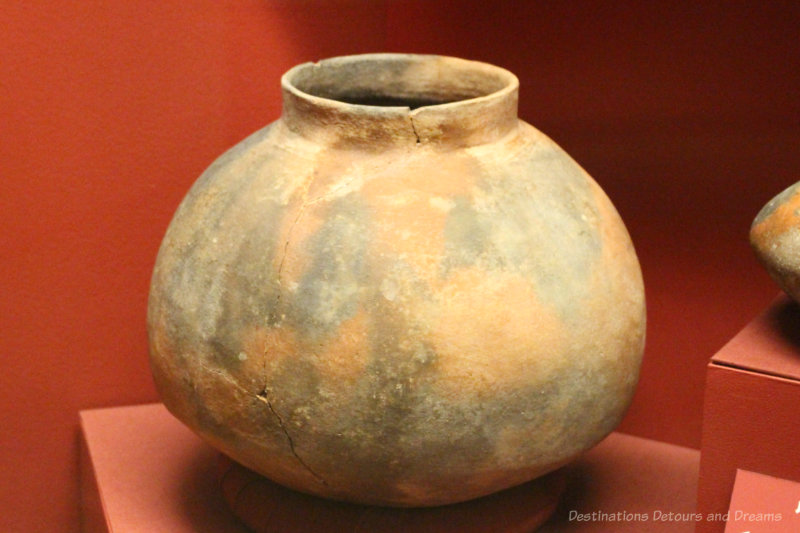
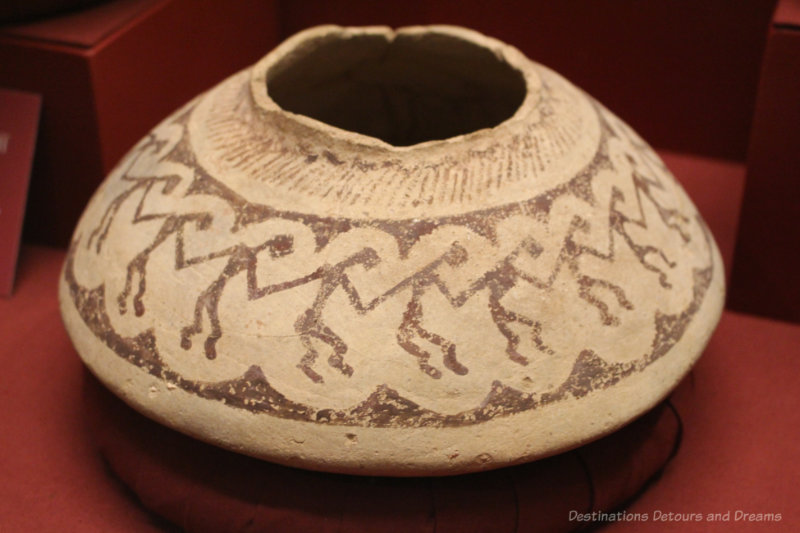
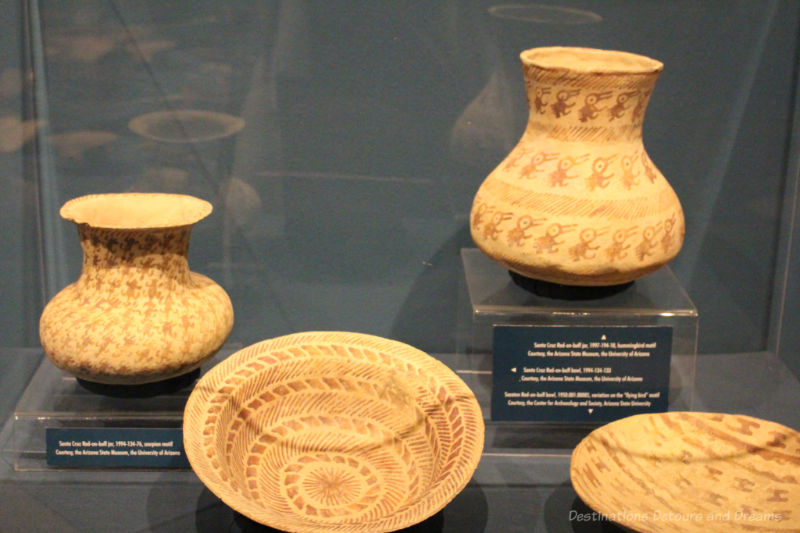
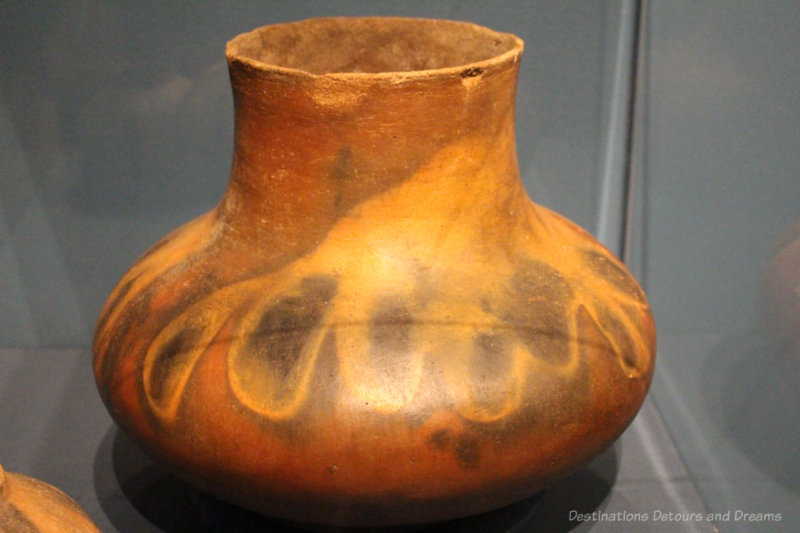
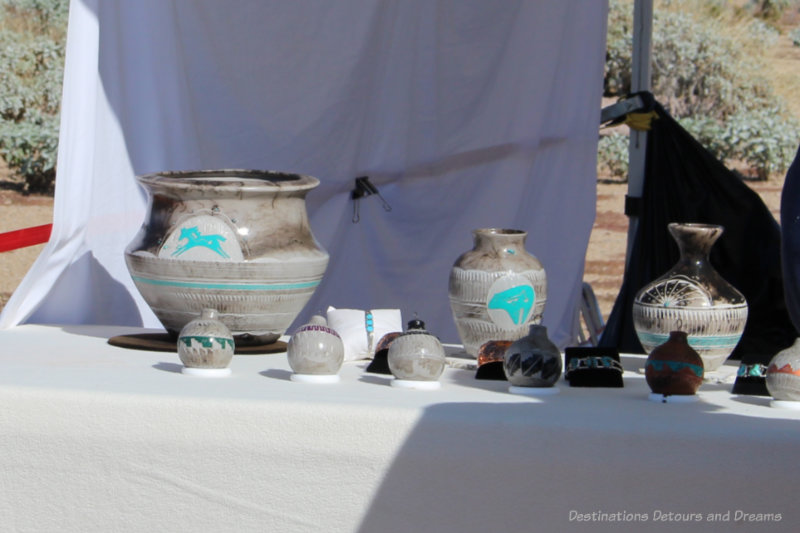
Hohokam jewelry and modern jewelry at the market
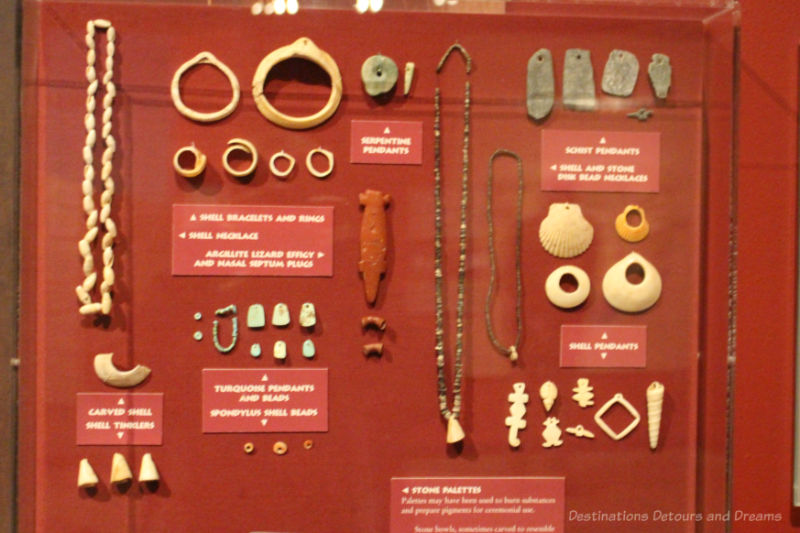
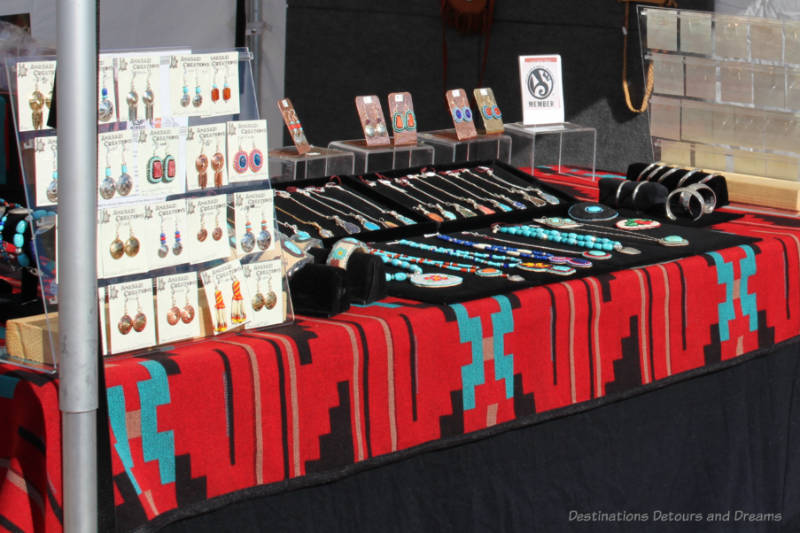
Hohokam villages were abandoned by AD 1450. Subsequently O’odham peoples inhabited the Sonoran desert region. The word Hohokam comes from the Akimel O’odham (Pima) term for “those who have gone”.
What happened to the Hohokam? It remains a bit of a mystery. Some archaeologists believe environmental catastrophes seriously affected agricultural production. Akimel O’odham oral histories indicate conflicts between groups may have contributed to the area’s abandonment. Perhaps an influx to the area made population levels too hard to sustain.
S’edav Va’aki Museum is located at 4619 E. Washington Street in Phoenix. It is open daily. Check the website for hours.
PIN IT
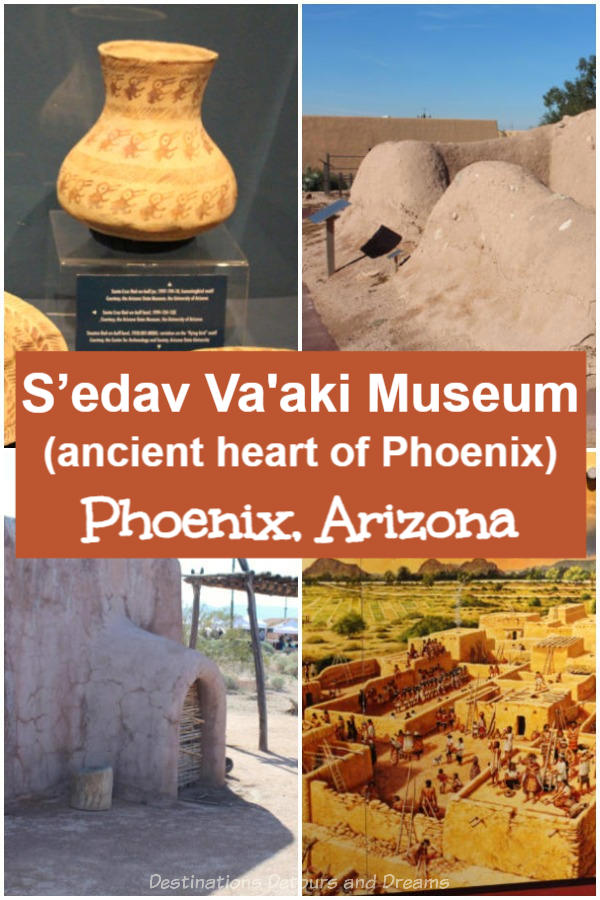

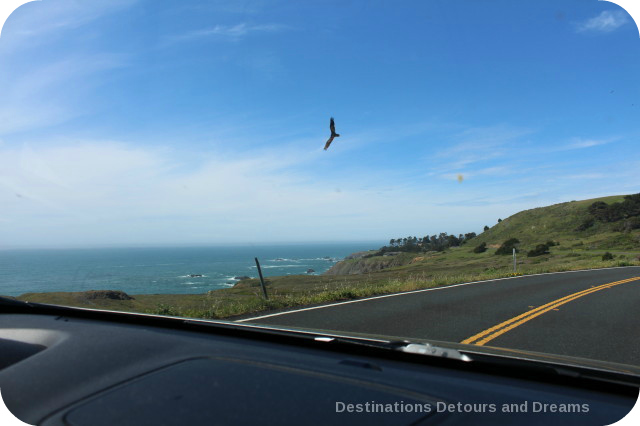
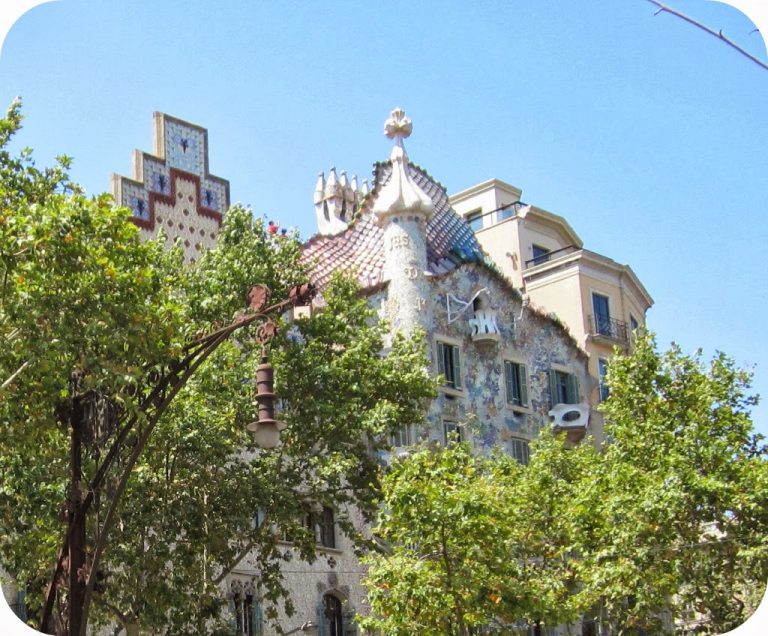
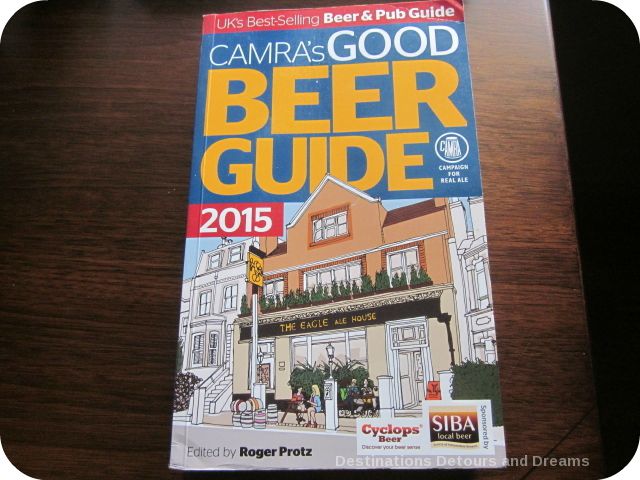
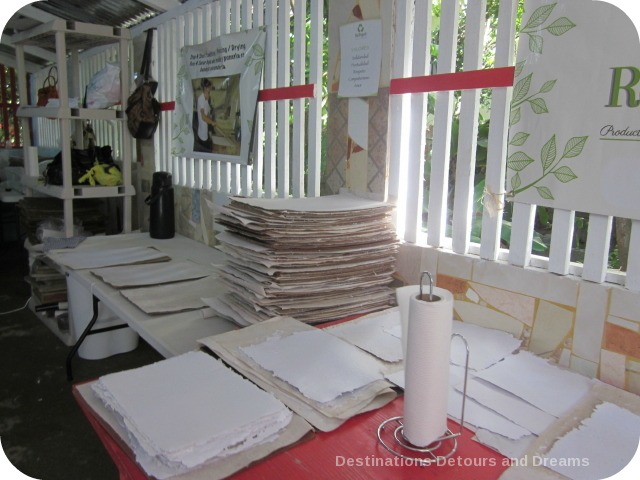

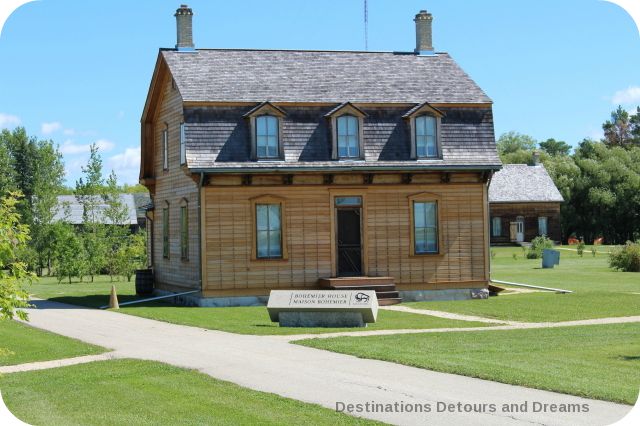
Very interesting and informative! I have never heard of the Hohokam! But this looks like an interesting trip and so close to Phoenix! And the pictures say so much about Pueblo Grande! It made me smile to see those balls…we never think of ancient peoples as playful, do we?
I guess we don’t often think of ancient peoples as playful, but the museum paints a picture of a very rich culture. It’s interesting to me how the archaeologists figure out what ancient life was like.
Hi donna; thanks for an interesting journey back in time even if you did have to ignore highway and aircraft noises. bet this post is even better for those who can see the images. sounds like you had fun and got lots of great photos. thanks for sharing, max
Thanks Max. It was an interesting history lesson.
Hi Donna. We have been to this, too….sometime in 2012. After visiting so many ruins around the Southest, finding one right in the middle of a big city was a big surprise! Thanks for writing about it in detail. I missed some stuff!
Yes, it is a bit of surprise to find it in the middle of the city, which made a great contrast with the ruins.
The Pueblo Grande settlement looks like a fascinating place to visit. I imagine it must have been a scorching place to live though.
Yes it must have been scorching in the summer. It would be interesting to hear what archaeologists think they did to deal with the heat.
Such an amazing place so close to Phoenix proper. Loved the juxtaposition of the ancient and modern pottery in this post.
Thanks. It was interesting to visit on a day when I had the modern Indian arts to compare with the ancient.
What a fascinating site! Thanks for introducing me to the Hohokam~
Thanks Irene.
Thanks for this very interesting post! We love learning about ancient cultures and exploring the ruins as well as seeing the artifacts. The Hohokam seem to have been very advanced with their canal systems and water conservation practices as well as mathematics and keeping a calendar. P.S. Don’t you love saying Hohokam?
Yes Anita – it is a fun word to say. The Hohokam do appear to have been quite a sophisticated culture. Many of us don’t think about that kind of ancient sophistication existing in the U.S.
We may be headed to Phoenix later this winter so that’s great to know about. We love ancient sites.
It’s centrally located as well, not very far from the Desert Botanical Garden which although not an ancient site is also worth a visit.
Thank you Donna For this interesting post.
I love learning about ancient culture
Thanks for stopping by.
I enjoy visiting pueblos. I’ve added Pueblo Grande Museum and Archaeological Park in Phoenix to my to-do list. One of my favorite pueblo visits was to the Acoma tribe in Sky City, New Mexico, http://berkeleyandbeyond.com/Way-Beyond/Travel-Articles/U_S_A_/Acoma-Indian-Res/acoma-indian-res.html
Carole, thanks for the information on Acoma Pueblo. I driven by on the I-40 a few times and didn’t know this was there.
Donna, You have written and photographed some of the most interesting places in Arizona. Keep ’em coming. I love these reports of yours.
Thanks. I love to explore the area around me wherever I am. I seek out places and events that interest me and hope they will be of interest to others too.
Such an interesting post Donna about a rich culture that I was totally unfamiliar with. I wonder how heavy those balls were! It’s fascinating to think about how they kept time and used a calendar so many years ago.
It is fascinating to learn about the richness of this ancient culture. The balls were behind glass and I don’t recall any signs indicating how much they weighted. They didn’t look light.
How have I missed this in all my visits to Phoenix? I’ve actually been to Casa Grande ruins about an hour out of Phoenix, but somehow overlooked Pueblo Grande right within the city. Both the history and mystery of the Hohokam are very interesting. Thanks for the tour of the museum,
I’ve read about the ruins at Casa Grande, but haven’t made it there yet. The history and mystery of the Hohokam is interesting.